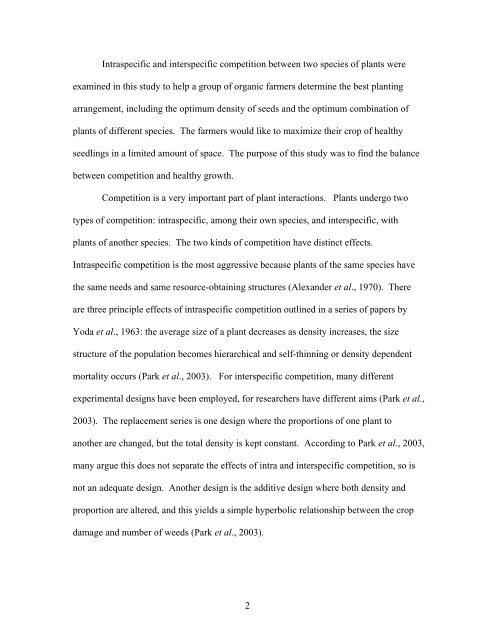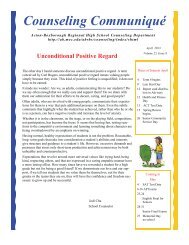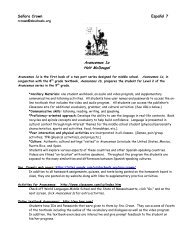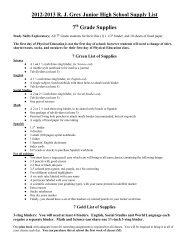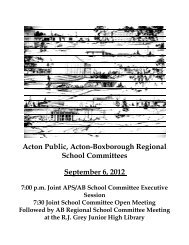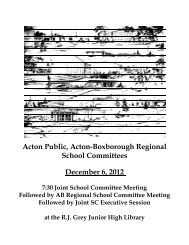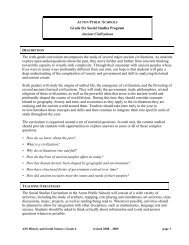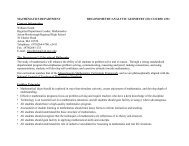THE EFFECTS OF INTRASPECIFIC AND INTERSPECIFIC
THE EFFECTS OF INTRASPECIFIC AND INTERSPECIFIC
THE EFFECTS OF INTRASPECIFIC AND INTERSPECIFIC
Create successful ePaper yourself
Turn your PDF publications into a flip-book with our unique Google optimized e-Paper software.
Intraspecific and interspecific competition between two species of plants were<br />
examined in this study to help a group of organic farmers determine the best planting<br />
arrangement, including the optimum density of seeds and the optimum combination of<br />
plants of different species. The farmers would like to maximize their crop of healthy<br />
seedlings in a limited amount of space. The purpose of this study was to find the balance<br />
between competition and healthy growth.<br />
Competition is a very important part of plant interactions. Plants undergo two<br />
types of competition: intraspecific, among their own species, and interspecific, with<br />
plants of another species. The two kinds of competition have distinct effects.<br />
Intraspecific competition is the most aggressive because plants of the same species have<br />
the same needs and same resource-obtaining structures (Alexander et al., 1970). There<br />
are three principle effects of intraspecific competition outlined in a series of papers by<br />
Yoda et al., 1963: the average size of a plant decreases as density increases, the size<br />
structure of the population becomes hierarchical and self-thinning or density dependent<br />
mortality occurs (Park et al., 2003). For interspecific competition, many different<br />
experimental designs have been employed, for researchers have different aims (Park et al.,<br />
2003). The replacement series is one design where the proportions of one plant to<br />
another are changed, but the total density is kept constant. According to Park et al., 2003,<br />
many argue this does not separate the effects of intra and interspecific competition, so is<br />
not an adequate design. Another design is the additive design where both density and<br />
proportion are altered, and this yields a simple hyperbolic relationship between the crop<br />
damage and number of weeds (Park et al., 2003).<br />
2


